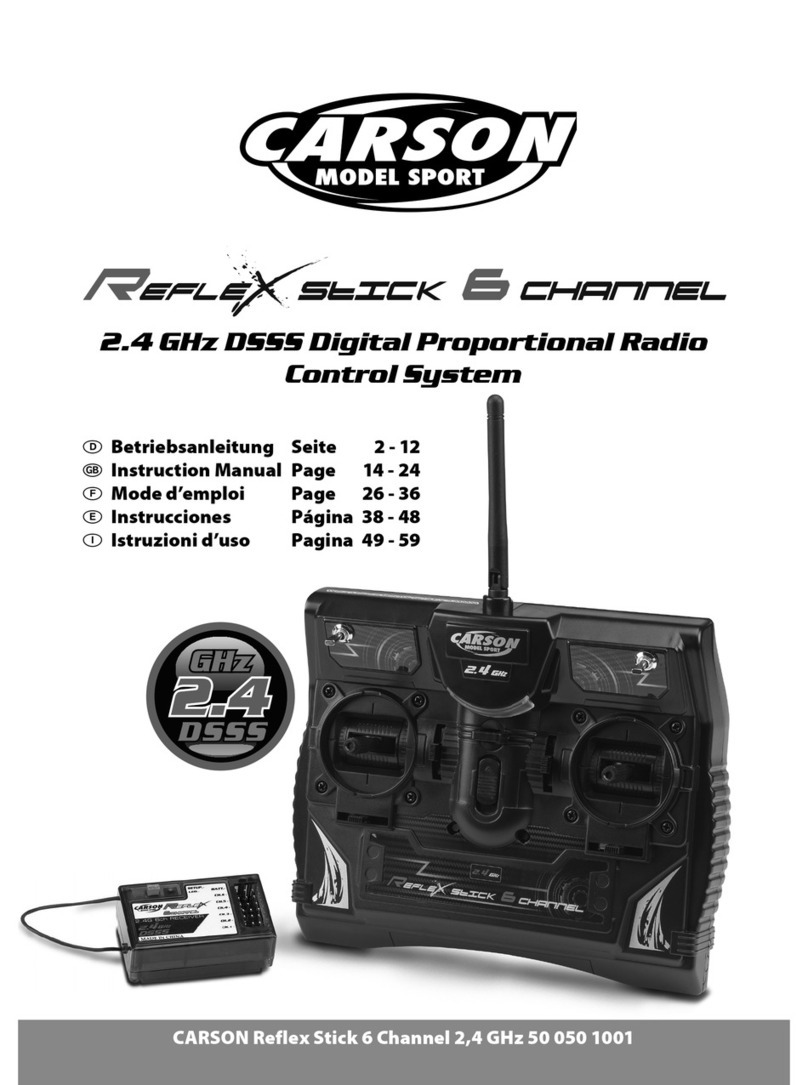57
GB
CARSON ReflexWheelUltimateTouch 500500516
Advantagesofthe 2,4 GHzTechnology
WorthNoting
The transmitter technology at 2,4 GHz is fundamen-
tally different in some aspects from the technology
in the 27,35 and 40 MHz frequency ranges, which up
to now have been conventional with remote control
models. The previous style of location using a
channel determined by plug-in crystals is gone, and
the transmitter and receiver work with encoding.
The receiver accepts only signals with the coding
from its own transmitter. Each signal from the
transmitter lasts just milliseconds. Before the next
signal, a pause is inserted, which lasts longer than
the transmission signal.
Nonetheless, within each second countless signals
are received and evaluated by the receiver. Signals
that the receiver recognizes as defective (false
encoding, strings that don’t fit the signal schema,
etc.) are suppressed and are not passed on as
control commands.
And as the frequency gets higher, the antennas get
shorter.
Remote controls using this transmitter technology
or model construction are not subject to fees.
Although the frequency range used is also divided
into channels, the user doesn’t have to worry about
their configuration and has no influence on it
anyway.
Because the same encoding is used by the
transmitter and receiver, interruption by another
receiver or a different transmitter will not occur.
Plug-in crystals are not needed, because the
transmitter creates the currently appropriate
frequency using a synthesizer circuit, as does the
receiver, which determines the right frequency for
ist encoding.
The old fear of double occupancy of a channel (as
when a second transmitter overreaches and
interrupts a receiver) is a thing of the past. An
operator can go ahead and switch on a transmitter
and receiver, without negotiating with other model
users.
The data transfer capacity is considerably larger
than that of previous remote controls, which has
a positive effect on control of the digital servo, for
example.
Best of all, at events with a lot of participants, you
can always use your own equipment for settings,
tests and conversions, because the number of
active transmitters is almost unlimited.
At very low wavelengths, obstacles can weaken or
interrupt the spread of radio waves. That means
there should be as few obstacles as possible in
the line between the transmission and reception
antennas.
The model’s receiver antenna must be as far away
as possible from electrically conductive parts and
very visibly arranged (protruding from the model)
to prevent loss of range.
Features ofthe 2,4 GHzRem oteControl




























